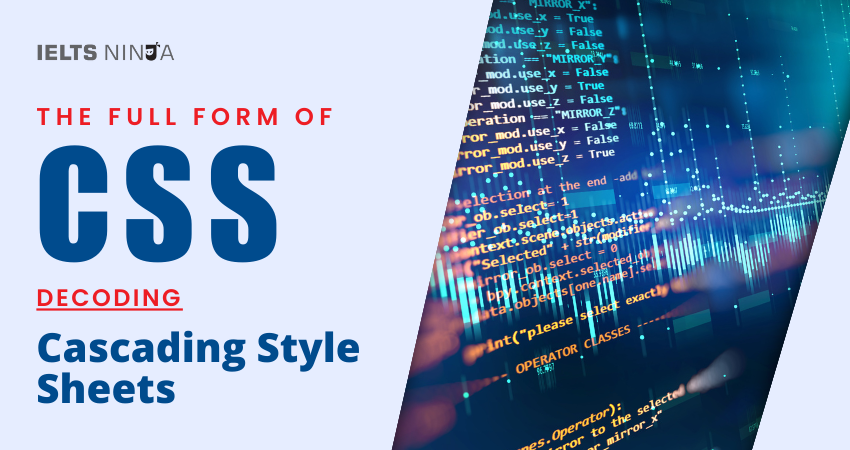The full form of CSS के लिए खड़ा है “Cascading Style Sheets”, और यह है a fundamental technology used in web development to control the presentation and layout of web pages. CSS is used in conjunction with HTML (Hypertext Markup Language) to define how web content should be displayed in web browsers. Here are key details about Cascading Style Sheets (CSS):
CSSPurpose:
The primary purpose of CSS is to separate the presentation (style) of a web page from its structure (content). It allows web developers and designers to define the visual appearance of web content, including elements such as text, images, links, and layout. By applying CSS rules to HTML elements, developers can create visually appealing and consistent web designs.
How CSS Works:
CSS works by associating style rules with HTML elements. These style rules define how elements should be displayed, including properties like fonts, colors, margins, padding, borders, and more. The CSS rules are applied to HTML elements based on selectors. Here’s a simplified example:
/* CSS Rule */ h1 { color: blue; font-size: 24px; } /* HTML Usage */ <h1>यह एक शीर्षक है</h1>
In this example, the CSS rule selects all <h1> elements and specifies that they should be displayed in blue with a font size of 24 pixels.
CSS Selectors:
CSS selectors are used to target specific HTML elements for styling. Common selectors include:
- Element Selectors: Target specific HTML elements by their tag name (e.g., h1, p).
- Class Selectors: Target elements with a specific class attribute (e.g., .highlight).
- ID Selectors: Target a specific element with a unique ID attribute (e.g., #header).
- Descendant Selectors: Target elements that are descendants of another element (e.g., ul li targets all <li> elements within a <ul>).
यह भी पढ़ें: सर्वश्रेष्ठ ऑनलाइन आईईएलटीएस कोचिंग एवं प्रशिक्षण अकादमी
Cascading in CSS:
The term “cascading” in CSS refers to the process of resolving conflicting style rules. Multiple CSS rules may apply to the same element, and they can come from different sources, such as external stylesheets, internal stylesheets (within HTML documents), and inline styles (applied directly to HTML elements). CSS uses a specific set of rules to determine which style should be applied, with more specific and closer rules taking precedence.
CSS Properties and Values:
CSS offers a wide range of properties and values that allow developers to control nearly every aspect of a web page’s appearance. Some common CSS properties include:
- color: Sets the text color.
- font-size: Defines the size of text.
- margin: Specifies spacing around an element.
- padding: Defines spacing within an element.
- background-color: Sets the background color of an element.
- border: Defines borders around elements.
CSS Frameworks and Preprocessors:
Web developers often use CSS frameworks (e.g., Bootstrap, Foundation) and preprocessors (e.g., SASS, LESS) to streamline the process of styling web pages. Frameworks provide pre-designed styles and components, while preprocessors enhance the capabilities of CSS by introducing variables, functions, and nesting.
CSS in Responsive Web Design:
CSS plays a crucial role in responsive web design, where web pages are designed to adapt to different screen sizes and devices. Media queries in CSS allow developers to apply different styles based on the user’s device or screen size, making web content more accessible on a variety of devices.
निष्कर्ष:
Cascading Style Sheets (CSS) are essential tools for web developers and designers, enabling them to control the presentation and layout of web content. CSS separates style from structure, making it possible to create visually appealing and responsive web designs. Understanding CSS and its wide range of properties and selectors is fundamental for anyone involved in web development and design.








